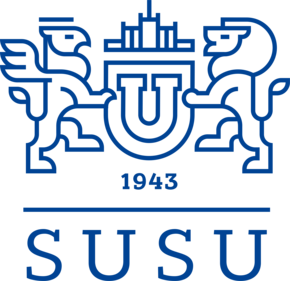A unique test of early intellectual and creative giftedness (TRITO), designed to diagnose divergent (creative) and convergent (intellectual) thinking among preschool children (6-7 years old), has been patented by researchers from the Psychology and Psyhophisiology of Stress and Creativity Scientific Laboratory of South Ural State University. Such test will allow psychologists to identify future schoolchildren for studying in classes with intensive educational programmes.
As the basis for creating of this method, the concept of “Gifted Children: Ecology of Creativity” (by V.G. Gryazeva-Dobshinskaya and V.A. Petrovskiy) was used, in which giftedness is defined as a manifestation of unique abilities that differ from the average level of development of peers. Gifted children may have high level of mental development, outstanding abilities in a certain area (for example, mathematics, music, art), or high creativity.
Therefore, children whose intellectual and creative thinking is ahead of the average level of development, should study in specialized schools and lyceums with intensive training programmes in order to preserve their outstanding abilities.
The unique method by the Chelyabinsk researchers allows to “diagnose” the talents inherent in a child by nature even before his/her going to school. The test of early intellectual and creative giftedness has two parallel forms (A and B), each of which consists of eight subtests (variability, logical tasks, blocks, symmetry groups, arithmetic problems, application of rules, divergent thinking, and design). The test includes tasks on counting and computational skills and verbal abilities: the degree of expression of verbal and logical thinking.
“The aim of such test diagnostics is to differentiate children with higher than average levels of intellectual development (in the range of 120-150 IQ) and creativity," said the author of this method, Doctor of Sciences (Psychology), Professor Vera Gryazeva-Dobshinskaya. "The scales for diagnosing reproductive and creative thinking are designed to identify the qualitative uniqueness of the abilities of children with advanced intellectual development. The scales assume that the preschooler can read fluently (some tasks in the scales, taking into account the time, must be read independently) and count to twenty or thirty."
The test is based on the operational concept of intelligence development by Swiss psychologist Jean Piaget. This algorithm diagnoses children's abilities to organize chaos. Another basis for the method is the concept of the structure of intelligence by Joy Paul Guilford. The verbal scales of the developed test are aimed not only at determining the child's vocabulary, but also at determining sensitivity to the semantics of the word and the manifestation of early cognitive aspirations in the humanitarian sphere.
All the scales are built as different versions of games. The playful, entertaining nature of tasks is necessary to focus child’s attention in a single semantic field of creative productivity for the entire testing period.
“With this form of testing, children do not just interact with a psychologist, but are involved into a game where tasks are given by their favourite fairy-tale characters,” said Senior Research Fellow of the SUSU Psychology and Psyhophisiology of Stress and Creativity Laboratory Vera Glukhova. “That is why, children enjoy the process, they do not feel that someone is evaluating them; it is during the game that the child feels comfortable and calm, and therefore s/he completes the tasks easily and cheerfully, without being embarrassed by failures: because the game, in fact, does not cause any emotional discomfort. Each task is completed within a certain time, and the more the child is ahead of his peers in the development of divergent and convergent thinking, the more successfully and more tasks s/he completes."
This method by the Chelyabinsk developers is unique because unlike other similar methods around the world, it simultaneously identifies individual components of giftedness: intelligence, creativity and motivation.
This test has successfully passed preliminary validation in MAEI "Lyceum No. 97" of the City of Chelyabinsk. Over the course of eight years (during this period, 1097 preschoolers took part in the study), the method has proven itself well in the recruitment and formation of students into experimental classes with intensive training programmes, in the practice of psychological counselling and in organizing classes with elementary school students on the development of divergent and convergent thinking. Today, the product by the SUSU developers is completely ready for commercialization.




